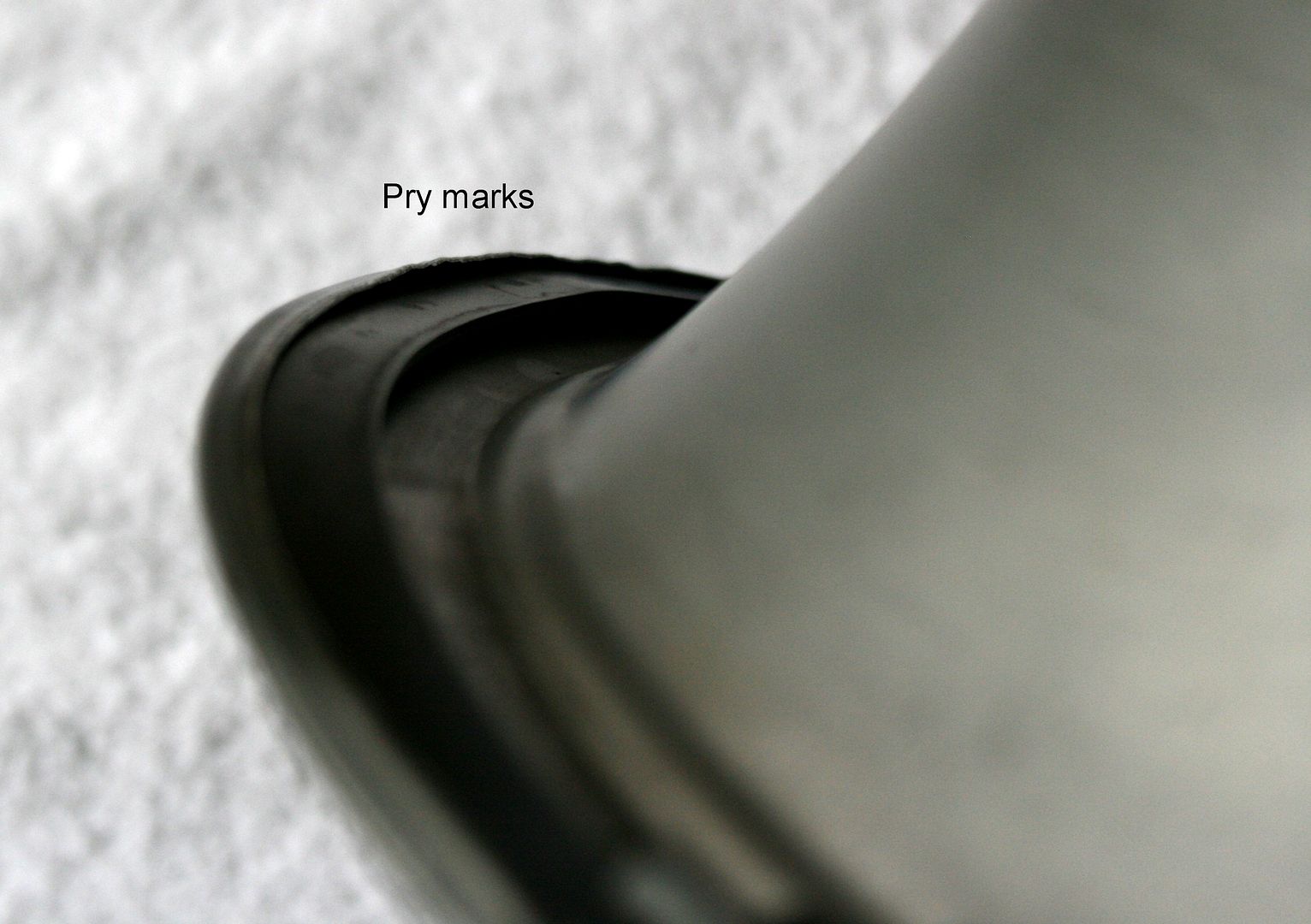Thought I would post this to see if anyone is interested in discussing the finer points of these trim ring bands and clips. I have seen questions posted over the years and like many others, I became interested and tried to research what is and isn't TFP.
I have come to the conclusion that, at least for 68 and 69, the crimp around the entire circumference of the band should be, for the most part smooth. There were areas that were not as tightly crimped but they were few and far between. This is shown below.


I have seen rings where the restorer did a very professional job as they 'uncrimped' the band just enough to move the clip orientation to represent TFP. Unfortunately, even when such workmanship is evident, the original tightness of the the factory crimp isn't returned and there is evidence left behind. I would think it would be extremely difficult, if not nearly impossible, to 're-crimp' to TFP. The next two PICs show a very professional job of re-orienting the clips.


The last couple PICs show a later service replacement (not 68/69) which is a typical example of a poor job of moving the clips. I believe this was never TFP in 68/69 and, most likely,through at least 1972. There was a time I thought maybe some assembly line rings were smooth and others were not but, I no longer think that is true based on original examples on and off original cars. If a ring shows pry marks such as the last two shots, it is my opinion there is no way (to borrow from Jackie Gleason) this is TFP. There is a well known restorer that would disagree.


Anyone thinks I'm all wet, feel free to let me know...my wife does daily. I just wanted to stir some discussion and perhaps debate. It's the NCRS way, afterall.
I just wanted to stir some discussion and perhaps debate. It's the NCRS way, afterall.
Regards,
Mark
I have come to the conclusion that, at least for 68 and 69, the crimp around the entire circumference of the band should be, for the most part smooth. There were areas that were not as tightly crimped but they were few and far between. This is shown below.


I have seen rings where the restorer did a very professional job as they 'uncrimped' the band just enough to move the clip orientation to represent TFP. Unfortunately, even when such workmanship is evident, the original tightness of the the factory crimp isn't returned and there is evidence left behind. I would think it would be extremely difficult, if not nearly impossible, to 're-crimp' to TFP. The next two PICs show a very professional job of re-orienting the clips.


The last couple PICs show a later service replacement (not 68/69) which is a typical example of a poor job of moving the clips. I believe this was never TFP in 68/69 and, most likely,through at least 1972. There was a time I thought maybe some assembly line rings were smooth and others were not but, I no longer think that is true based on original examples on and off original cars. If a ring shows pry marks such as the last two shots, it is my opinion there is no way (to borrow from Jackie Gleason) this is TFP. There is a well known restorer that would disagree.


Anyone thinks I'm all wet, feel free to let me know...my wife does daily.
 I just wanted to stir some discussion and perhaps debate. It's the NCRS way, afterall.
I just wanted to stir some discussion and perhaps debate. It's the NCRS way, afterall.Regards,
Mark
Comment